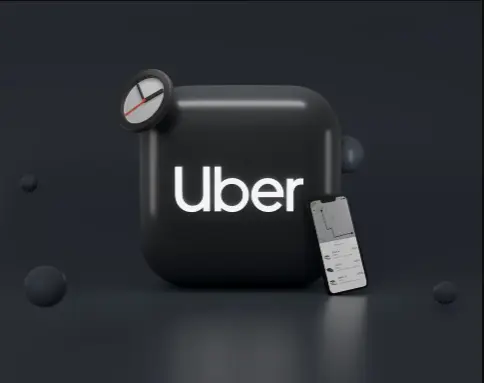Ridesharing apps like Uber revolutionized transportation, offering convenient and seemingly safe alternatives to traditional taxis. However, a growing number of sexual assault allegations against Uber drivers have shattered this perception of safety.
This has culminated in a multidistrict lawsuit (MDL) against Uber, raising serious questions about the company’s responsibility for passenger safety. There is also a possibility that the lawsuits will potentially impact the entire ridesharing industry.
Passenger Safety Concerns Take Center Stage
The core of the Uber sexual assault lawsuit revolves around passenger safety. Hundreds of women have come forward, alleging that Uber drivers sexually assaulted them during rides. As per a June 2024 update by the Lawsuit Information Center, 319 Uber sexual assault lawsuits have been filed so far.
These lawsuits claim that Uber failed to adequately screen drivers and implement robust safety measures, ultimately creating an environment where such assaults could occur.
TorHoerman Law notes that some lawsuits detail situations where drivers with past criminal convictions, including assault charges, slipped through Uber’s background checks. This raises concerns about the thoroughness of these checks and the potential for future incidents.
Examining Driver Screening Practices
Lawsuit Legal News states that one of the central arguments in the lawsuit focuses on Uber’s driver screening process. Plaintiffs allege that Uber’s background checks are insufficient, potentially allowing individuals with a history of violence to become drivers. The lawsuit demands a more thorough screening process, including stricter criminal background checks and evaluations for potential red flags.
Furthermore, the lawsuit argues that Uber should be more transparent about its screening process. Disclosing what type of background checks are conducted and the criteria used for driver selection could help rebuild trust with passengers.
The Role of Technology in Passenger Protection
Technology has played a crucial role in the rise of ridesharing, but can it also enhance passenger safety? The lawsuit compels Uber to explore and implement technological solutions that could deter assaults or provide faster emergency response during rides.
This might include features like in-app panic buttons, real-time GPS tracking, and driver audio/video recording during rides. Additionally, implementing technology that allows passengers to share ride details with trusted contacts could provide added peace of mind.
These features wouldn’t prevent all assaults, but they could act as deterrents and potentially provide valuable evidence in case of an incident. In April 2024, Uber launched a new safety preferences section that allows passengers to customize the safety aspects of their rides.
The Verge notes that you can go to your Account tab in the Uber app and select “Safety checkup” to configure your safety settings. To add your preferred safety item, touch “Start setup” under “Safety preferences.” After that, a new page will open and you may decide whether to plan all, part, or none of the rides. While riding, you may also press the blue shield of the Safety Toolkit and choose “Set up safety preferences.”
Shifting the Responsibility
The Uber lawsuit challenges the legal landscape surrounding ridesharing companies and their responsibility for passenger safety. Forbes notes that traditionally, ridesharing companies have classified their drivers as independent contractors, limiting their legal liability. However, the lawsuit argues that Uber exerts significant control over drivers and should be held accountable for their actions.
For example, Uber dictates fares, sets driver performance metrics, and can deactivate drivers for violating company policies. This level of control undermines the claim that drivers are truly independent contractors. It suggests Uber should be held more responsible for ensuring driver safety and passenger well-being.
A Call for Industry-Wide Reform
The Uber sexual assault lawsuit extends beyond Uber itself. It raises concerns about the safety of the entire ridesharing industry. The outcome of this lawsuit could set a precedent and force other companies to re-evaluate their driver screening practices. It could also make other companies work on implementing stricter safety measures and potentially face increased liability for passenger safety.
Attorneys involved in these cases have noted that this multidistrict litigation is among the largest federal sexual assault litigations in history. According to Smart Cities Dive, they say that the Uber sexual assault MDL is expected to undoubtedly transform the American rideshare industry.
This could lead to a more standardized approach to ridesharing safety across the industry. Ultimately, a balance needs to be struck between ensuring passenger safety without stifling innovation and convenience within the ridesharing industry.
FAQs
How safe is Uber for female passengers?
While Uber has safety features, sexual assault lawsuits highlight potential risks. Ridesharing can be convenient, but it’s important to be aware of your surroundings and utilize the safety tools offered by the app.
How to stay safe in an Uber alone?
Here are some tips: Share your ride details with a trusted contact, track your trip progress, and be mindful when getting in. If you feel unsafe, use the in-app emergency features or call 911.
What are the lawsuits against Uber?
Uber faces lawsuits from passengers alleging sexual assault by drivers. These lawsuits claim Uber failed to properly screen drivers and implement sufficient safety measures, putting passengers at risk.
Overall, the Uber sexual assault lawsuit exposes a critical vulnerability in the ridesharing industry: passenger safety. While these lawsuits may hold Uber accountable, their potential impact extends far beyond.
A stricter legal precedent could force the entire ridesharing industry to adopt more robust screening practices and technological safeguards. This would undoubtedly transform the industry, but it remains to be seen if this can effectively balance safety concerns with the convenience of ridesharing.





